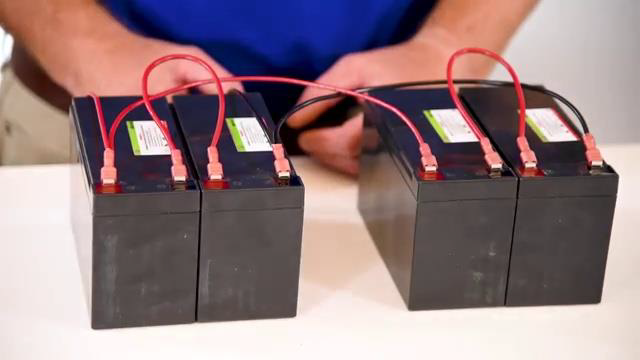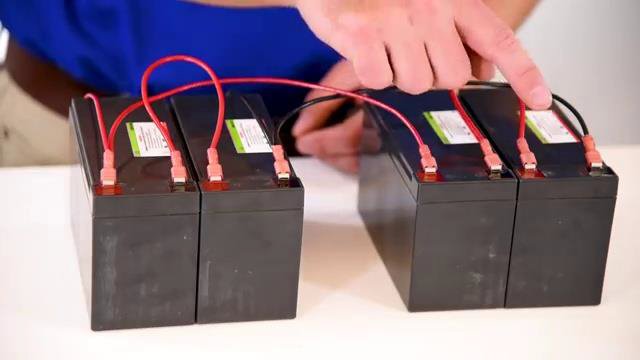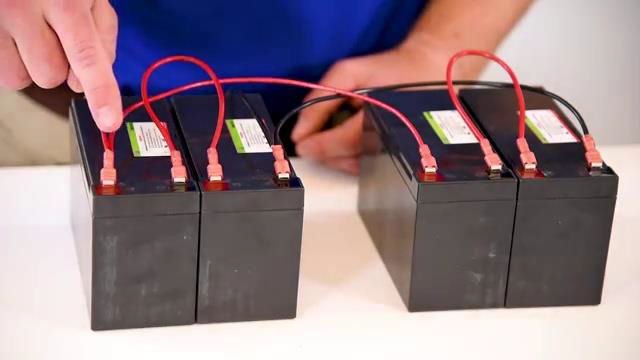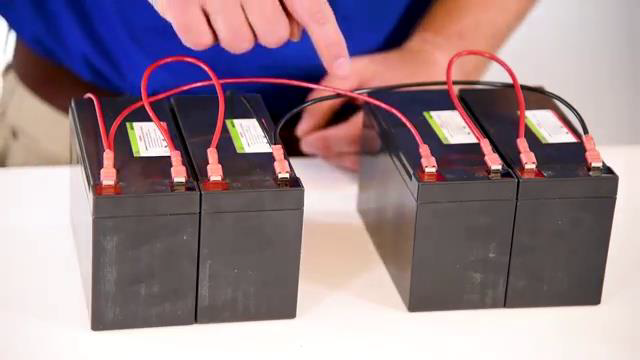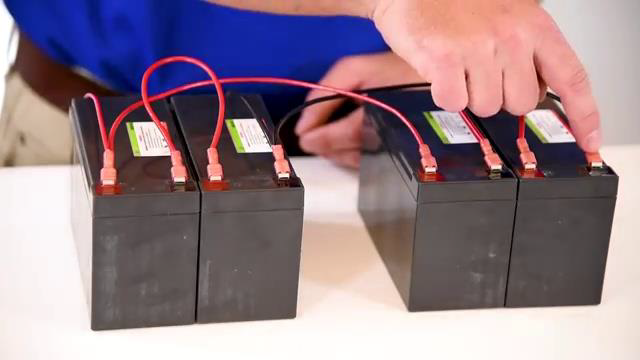Wiring_Batteries_Series_vs__Parallel_(Part_Two).pdf
In today's video we want to pick up where we left off in a previous video on how to wire a battery in series or parallel.
See Part 1
- Wiring in series increases our voltage, but has no impact on our capacity (or amp hours)
- Wiring in parallel will increase our capacity, but will have no impact on our voltage.
In many cases we need to increase both capacity and voltage. So what do we do if we want to both increase our battery capacity as well as increase our voltage? In this case we have to use a combination of these two different methods to achieve the desired result.
- First wire a pair in series
- Then wire the next pair in series
- Then wire those two pair together in parallel
Transcript:
[0m:4s] Hi I'm Josh Bloom, welcome to another video in the RSP Supply education series. Today we want to pick up where we left off on a video about how we wire batteries in Series versus parallel. If you haven't seen that video, please go to RSPSupply.com or click in the link in the description below. In that video we talk about how when we wire batteries in series, we increase voltage. However, we do not see any increase in capacity or AMP hour rating. We also talk about how when we wire in parallel, we increase capacity or AMP hour rating, but we do not see an increase in voltage.

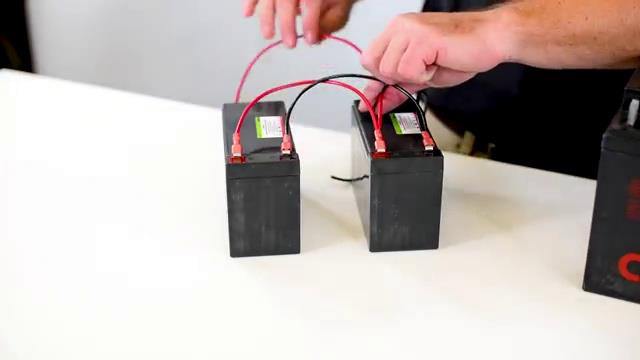
[0m:39s] However, there are many scenarios where we need to increase both the voltage and capacity. So what do we do when we need to increase both of these things. In this case, we combine both wiring methods, wiring both in series and in parallel to get the desired result. Let's use an example where we have a control panel that needs 24 volts of power and needs 15 AMP hours of capacity. Let's also assume that we have four batteries that are 12 volts each at 7.5 AMP hours. Let me show you how we wire these batteries to meet those requirements. We first take two 12 Volt batteries and we wire those in series. Now, again, when we wire in series that's the positive terminal to the negative terminal. This will give us 24 volts for these two batteries. We then go to another set of two batteries and wire those in series as well again, positive to negative. We now have two banks of batteries each providing 24 volts. Keep in mind that each bank is only providing 7.5 AMP hours of capacity. In order to reach the 15 app hours of capacity that we need, we will need to wire both banks together in parallel. That will increase our capacity to the 15 AMP hours. Let me show you how we do that. From the first bank, we wire the positive terminal to our load and we also wire it to the positive terminal on the second bank. We then wire the negative terminal on bank one to our negative DC bus and also to the negative terminal on our second bank. We now have met both requirements of 24 volts as well as 15 AMP hours of capacity. This type of wiring configuration can be scaled to meet 36 volts, 48 volts, or any variation above that. We can also scale this to meet any capacity requirement that might be needed. For a full line of batteries or thousands of other products, please go to our website. For more information or other educational videos, go to RSPSupply.com, the Internet's top source for industrial hardware. Also, don't forget: like and subscribe.
